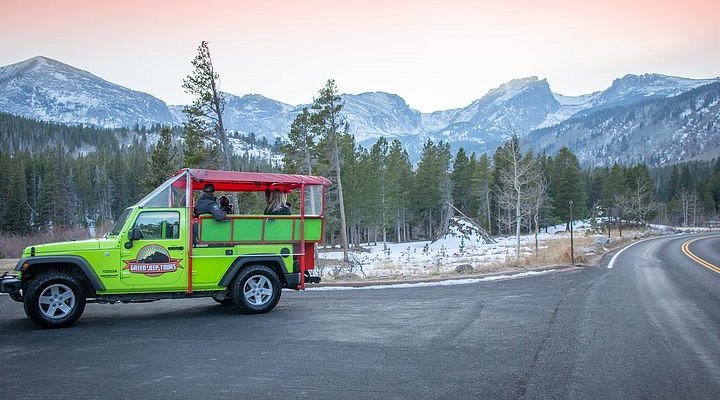Introduction
Ever stood on a mountain peak, feeling like the world was both infinite and small all at once? That’s the Rocky Mountain Connection—a feeling that’s as vast as the range itself and as personal as your own heartbeat. It’s not just about towering peaks or postcard views; it’s about the invisible thread that ties people, wildlife, and wilderness together in an unshakable bond.
Stretching from Canada all the way to New Mexico, the Rocky Mountains are more than a geological wonder—they’re a spiritual home, a playground for adventurers, and a living classroom for those who seek connection beyond the ordinary.
In this journey, we’ll unravel the meaning of the Rocky Mountain Connection, explore how it’s shaped cultures, inspired explorers, and continues to call out to modern-day dreamers. Buckle up, because we’re about to wander through history, heart, and horizon!
The Roots of the Rocky Mountain Connection
Before there were hiking boots or highways, the Rockies were revered by Indigenous peoples who understood something most modern folks are still learning—that humans and nature aren’t separate. They’re intertwined.
For centuries, Native American tribes like the Ute, Blackfeet, and Shoshone held ceremonies on these peaks, believing the mountains to be sacred gateways between the earthly and the divine. The wind that howled through the passes wasn’t just weather—it was wisdom whispering from the ancients.
That Rocky Mountain Connection began long before explorers ever set foot here. It’s the heartbeat of the land—a rhythm that resonates through every stream, canyon, and snowcap.
The Call of the Wild—And Why We Answer It
So what’s the big deal about mountains, anyway? Why do they tug at our hearts like magnets? Maybe it’s because the Rockies demand something from you. You can’t half-heartedly climb a mountain. You’ve got to dig deep, face your fears, and let go of control.
When you stand atop a peak and look out at a world untouched by human hands, something inside you shifts. You remember what it means to be small—but not insignificant. That’s the connection people talk about but can’t quite describe in words.
A few reasons we crave the Rockies:
- Perspective: The higher you go, the smaller your worries look.
- Challenge: The climb humbles and strengthens you.
- Peace: The silence up there isn’t empty—it’s full of meaning.
- Wonder: Every sunrise feels like a miracle.
No matter where you’re from, the Rockies invite you to be part of something bigger, something ancient.
The Modern Rocky Mountain Connection—Where Past Meets Present
Fast forward to today, and the Rocky Mountain Connection has evolved. It’s not just a spiritual link; it’s also a modern movement. People are finding creative ways to stay connected to the Rockies without always being physically there.
Through photography, remote work cabins, eco-tourism, and conservation efforts, the spirit of the Rockies is reaching more people than ever.
The New Age Explorers
Unlike the pioneers who trekked west in wagons, today’s adventurers travel with drones, mountain bikes, and GPS devices. Yet the core motivation remains the same—to connect. To feel alive. To be humbled by something greater.
Whether it’s a digital nomad sipping coffee in a Colorado cabin or a climber scaling Alberta’s peaks, each person adds a new verse to the timeless song of the Rockies.
Nature’s Classroom—Lessons from the Rockies
Every rock, tree, and trail tells a story. The Rockies are a living, breathing library of lessons waiting to be discovered.
Here’s what the Rockies teach us—if we’re willing to listen:
- Patience: Nothing rushes here. Snow melts when it’s ready. Flowers bloom on their own time.
- Resilience: Trees grow crooked but strong, molded by the wind.
- Balance: Predators and prey, rain and drought, life and death—all play their part.
- Adaptation: The mountains change with the seasons, yet their essence remains unbroken.
When we slow down enough to see this rhythm, we find ourselves mirroring it—breathing deeper, living simpler, and feeling more at peace. That’s the Rocky Mountain Connection in its purest form.
Hidden Gems—Places That Embody the Connection
It’s one thing to talk about connection; it’s another to feel it. Luckily, the Rockies offer countless corners where you can experience it firsthand.
Top Spots to Feel the Rocky Mountain Magic:
- Banff National Park (Canada): Turquoise lakes, snow-dusted peaks, and elk wandering freely—it’s like stepping into another world.
- Rocky Mountain National Park (Colorado, USA): Think alpine lakes, elk bugling in the fall, and trails that lead to breathtaking silence.
- Grand Teton Range (Wyoming): Jagged peaks mirrored in serene waters—a photographer’s dream and a hiker’s heaven.
- Glacier National Park (Montana): Known as the “Crown of the Continent,” it’s a place that captures both your lens and your soul.
Each spot offers a unique kind of connection—to the earth, to yourself, and to the people who share the path with you.
The Rocky Mountain Connection and the Human Spirit
There’s a reason people talk about “finding themselves” in the mountains. Something happens when you strip away the noise of city life and face raw, unfiltered nature.
The Rocky Mountain Connection isn’t just about geography—it’s about transformation. You arrive one person and leave another. Maybe lighter, maybe stronger, but always changed.
A Spiritual Awakening
Some describe it as spiritual, others as deeply emotional. The feeling when a golden sunrise hits the peaks or when the Milky Way glows above you—it’s awe in its purest form. And awe, as it turns out, is one of the most healing emotions humans can feel.
You realize you’re not separate from nature—you’re part of it. That realization alone can rewrite how you live your life.
The Environmental Connection—Protecting What Connects Us
It’s no secret that the Rockies face threats—from climate change to over-tourism. But here’s the silver lining: awareness is growing. People are realizing that to preserve this connection, we’ve got to protect the land that gives it life.
Ways to Strengthen the Rocky Mountain Connection (Responsibly):
- Leave No Trace: Take only memories, leave only footprints.
- Support Conservation: Donate or volunteer for organizations protecting wildlife and trails.
- Respect Local Culture: Learn from Indigenous voices who’ve been caretakers of this land for generations.
- Travel Mindfully: Choose eco-friendly accommodations and limit your carbon footprint.
By caring for the Rockies, we’re not just saving a landscape—we’re preserving a legacy.
A Living Legacy—Stories Passed Down the Peaks
The Rockies aren’t just rocks and rivers; they’re stories carved in stone. From gold rush pioneers to park rangers, from poets to photographers, countless souls have found meaning here.
And each generation adds something new—a poem, a photo, a footprint. Together, they form a living legacy of connection.
There’s something deeply human about wanting to leave a mark, yet the Rockies remind us that the most meaningful marks are invisible—the ones we leave on hearts, not stones.
Why the Rocky Mountain Connection Still Matters Today
In a world obsessed with speed, screens, and likes, the Rocky Mountain Connection stands as a quiet rebellion. It’s an invitation to unplug, breathe, and remember that not everything beautiful fits in a box—or a smartphone.
People are rediscovering slow travel, intentional living, and the healing power of the outdoors. From guided meditation retreats in Estes Park to backcountry yoga in Jasper, the Rockies have become a refuge for the soul-weary.
They whisper, “You’re home,” even if you’ve never been there before.
FAQs About the Rocky Mountain Connection
Q1: What does “Rocky Mountain Connection” mean?
It refers to the emotional, spiritual, and environmental bond people share with the Rocky Mountains—connecting humans to nature, culture, and self-discovery.
Q2: Can I experience this connection without visiting the Rockies?
Absolutely! Through art, documentaries, meditation, and conservation work, you can feel connected to the spirit of the Rockies wherever you are.
Q3: Why are the Rockies considered spiritually significant?
Many Indigenous cultures view the Rockies as sacred spaces—bridges between earth and sky, where the spiritual world feels closest.
Q4: How can I personally strengthen my connection with the Rockies?
Spend time in nature, learn local history, and practice mindfulness. It’s not about distance—it’s about presence.
Q5: Are the Rockies the same throughout their range?
Not quite. While the range shares geological roots, each region—from Canada to New Mexico—has its own climate, wildlife, and cultural flavor.
Conclusion: The Connection That Never Breaks
The Rocky Mountain Connection isn’t just a phrase—it’s a promise. A reminder that even as cities grow and time marches on, there’s a place where the air still smells of pine and freedom, where silence speaks volumes, and where the soul feels seen.
Whether you’re trekking a trail, watching clouds roll over a ridge, or simply daydreaming of alpine horizons, you’re part of that connection. It’s timeless, universal, and alive in anyone who’s ever looked at a mountain and felt something stir inside.
So the next time you feel lost, remember this: the Rockies are always there—waiting, steady, and strong. And in their quiet majesty, they whisper the same truth over and over again—you belong here.

